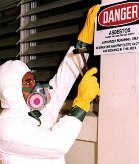NIOSH releases its evaluation of potential exposures and health effects of those involved in the Deepwater Horizon response activities.
Canadian study validates the condition called electrosensitivity.
The device uses a sensitive carbon dioxide-sensing mechanism that can locate the signature of a single bed bug behind a wall or in a concealed space, according to Stern Environmental Group.
Formaldehyde is a known eye, nose, and throat irritant, and in 1991, EPA classified formaldehyde as a probable human carcinogen. Formaldehyde-based resins are sometimes used as adhesives in composite wood products.
The Bureau of Ocean Energy Management, Regulation and Enforcement, formerly MMS, has developed rules for offshore oil and gas operations in federal waters that require operators to develop and follow a 13-point Safety and Environmental Management System.
In an independent review, a team found that the Department of Environmental Protection's program for oil and gas wells is well managed and meets its objectives.
EPA is contributing $6 million to the International Project for Clean Cookstoves in order to help prevent exposure to indoor smoke from cooking fires.

The health risk and liabilities of this hazardous substance cost too much to ignore; the best approach is to eliminate the problem.
The agency is "drilling down to bedrock" to uncover the impact of the process on drinking water sources.
Long-standing pesticide faces government review, an activist campaign, and two lawsuits.
The House Transportation and Infrastructure Committee said it has evidence that residents affected by the recent spill in Michigan are being asked to waive legal rights or sign over medical records.
Federal and Tennessee agencies have determined that any coal ash remaining in the river presents minimal health risks to recreational users.
The company makes pentachloronitrobenzene, a fungicide used on turf, and was ordered to stop selling the product because it did not identify trace impurities in its confidential statement of formula.
CH2M Hill to implement the technology for the second largest U.S. coal producer.
The Census of Fatal Occupational Injuries reports that 19 solid waste collection workers died on the job in 2009, down from 31 fatalities in 2008.
Chemical manufacturers would need to provide production volume, facility data, and product uses information under EPA's Inventory Update Reporting Rule.

“Controlling the mosquito vector can work, but it is very expensive and difficult to sustain,” says Anna Durbin, M.D., who is leading the study at Johns Hopkins. “In the long run, vaccination would be a more efficient and cost-effective approach.”
More than 50 public meetings are scheduled for this CDC-ASTDR project about chemical exposures and public health. An action agenda is scheduled for release in December.
Sen. Collins introduced an amendment to keep the Chemical Facility Anti-Terrorism Act alive for another three years.